
From Grain to Glory: The European Bread Museum’s Tribute to a Staple of Civilization
In a world inundated with a rich diversity of histories, the presence of a museum dedicated solely to bread stands as a delightful anomaly. Located in the heart of Varnavas, Greece, the European Bread Museum stands as a one-of-a-kind repository, encapsulating the rich tapestry of Europe's bread-making traditions, which span across centuries and civilizations. By unraveling the deep-seated connection between bread and various facets of daily life, the museum offers a tantalizing exploration into the art and tradition of bread-making, an activity that goes beyond mere sustenance, weaving into religious rituals, festive celebrations, and familial bonds. As visitors step into this unique museum, they are ushered into a world where the humble loaf of bread takes center stage.
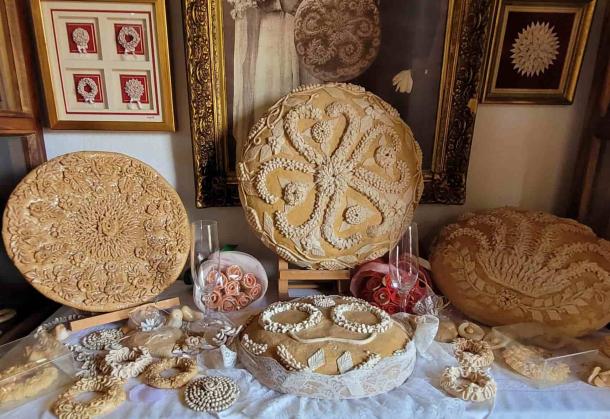
Embroidered bread for marriage celebrations in the European Bread Museum. Photo: Joanna Gillan
The History of European Bread-Making
The history of bread-making in Europe is as rich and varied as the continent itself. The origin of bread dates back to the Neolithic era, with evidence suggesting that the first bread was made more than 6000 years ago. Initially, bread was simply a mixture of water and grains, evolving over time through trial and error, influenced by the spices and techniques introduced through trade and cultural exchanges.
The ancient Greeks revered bread as a gift of the gods, incorporating it into religious ceremonies and societal norms. As Christianity took root, bread assumed a central role in religious rituals, with specialty breads being crafted for various celebrations, for example, “Gamokouloura” (Wedding Roll) and the “Kouloura tis Vaftisis” (Christening bread).
Sweet breads embellished with dried fruits and nuts became a staple during Christmas, while during Easter, the tradition of baking cross-buns, representing the crucifixion of Christ, emerged. The “Kyra Sarakosti” (Madame Lent) is in the shape of a woman with seven legs, representing the weeks leading up to Orthodox Easter.
- The Desperate and Distasteful Practice of Grinding Human Bones to Make Bread
- 14,400-year-old Bread Causes Major Re-think on the Birth of Agriculture
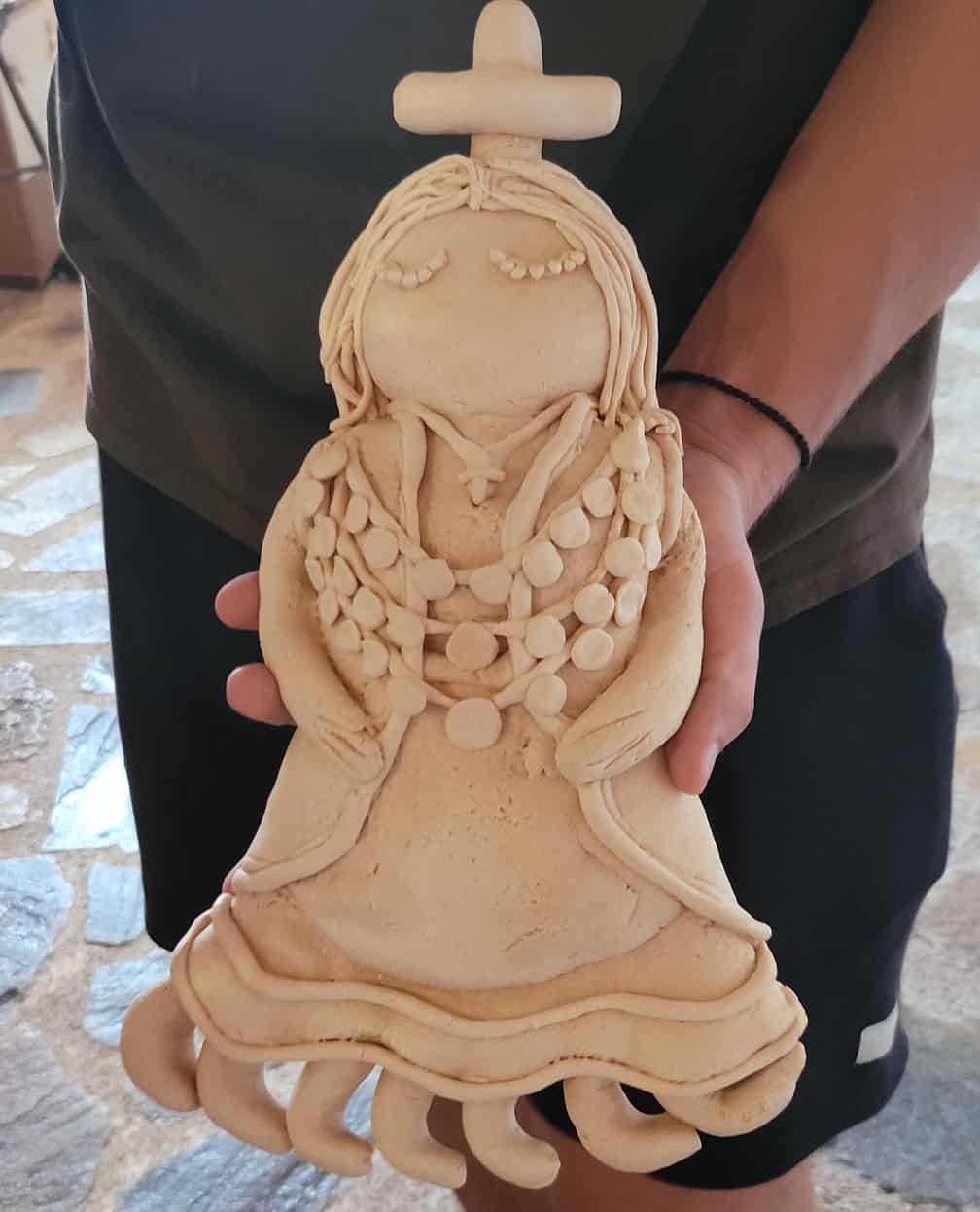
The “Kyra Sarakosti” (Madame Lent) is in the shape of a woman with seven legs. European Bread Museum. Photo: Joanna Gillan
The Heart of the Museum: A Living Tribute to Bread
Stepping into the European Bread Museum, one is greeted by a remarkable assemblage of exhibits, each narrating the story of bread through the ages. The museum displays over 3000 items of embroidered bread, from Greece and 50 other countries.
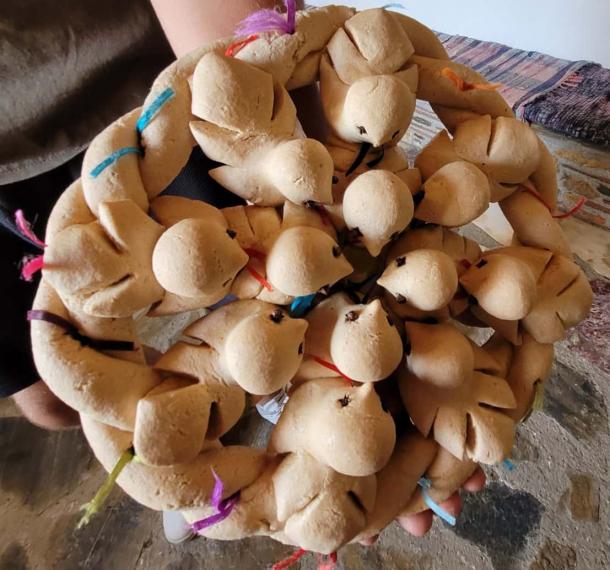
Easter-themed bread in the European Bread Museum. Photo: Joanna Gillan
An integral part of the exhibition is the section dedicated to the rituals and traditions revolving around bread. Through interactive displays and detailed visuals, one can learn about the significance of bread in religious ceremonies, weddings, and other celebrations, along with the symbolism imbued in various specialty breads crafted for these occasions. For example, "Artoklasia," a Greek tradition still observed nationwide, signifies "the act of dividing bread." Recognized as the "The Blessing of Five Loaves," this practice represents a form of Greek thanksgiving, expressing gratitude for the myriad blessings of life.
Children and adults alike can benefit from the educational workshops hosted by the museum, which encourage hands-on participation, allowing visitors to knead, shape, and bake their own loaves, taking home not just a tangible product, but an enriching experience infused with knowledge and respect for this ancient culinary art.
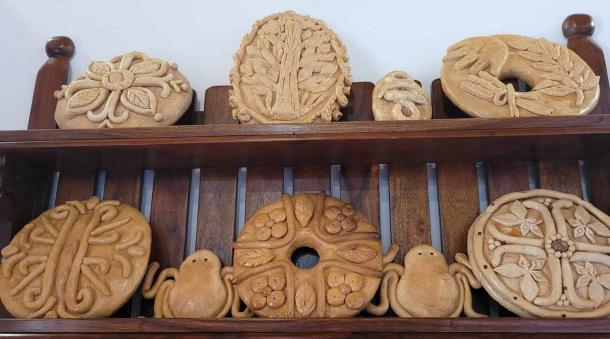
Embroidered bread in the European Bread Museum. Photo: Joanna Gillan
Bridging Generations through Bread
The museum plays an instrumental role in preserving the knowledge of ancient bread-making techniques, rescuing them from the brink of extinction and offering a space where they can be cherished and propagated. Through educational initiatives and community engagement, it encourages individuals to reconnect with the roots of European civilization, fostering a culture of respect and reverence for the humble loaf of bread, which has nourished societies for centuries.
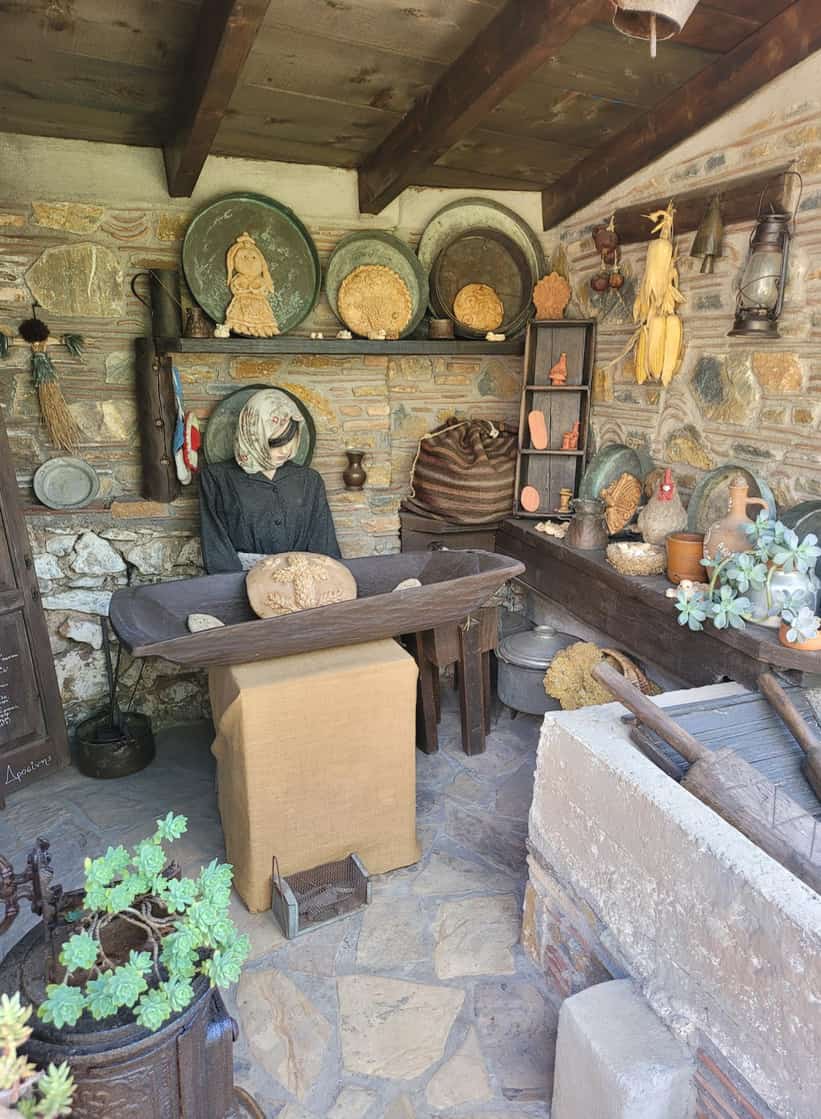
Interactive displays in the European Bread Museum. Photo: Joanna Gillan
The European Bread Museum in Varnavas, Greece, is more than a museum; it is a living testament to the rich heritage of European bread-making, a space where history, culture, and tradition converge to celebrate the simple yet profound joy that a loaf of bread can bring. It is a must-visit destination for gastronomy enthusiasts and history buffs alike, offering a rich, wholesome experience that nourishes both the body and the soul.
Learn more about the European Bread Museum: Facebook page / Instagram / Twitter
Top image: An elaborate loaf of bread in the European Bread Museum, Greece. Photo: Joanna Gillan
References
European Bread Museum Official Website. Available at: https://mouseio-psomiou.com/en/the-museum/
History of Bread. Available at: http://www.historyofbread.com/
Paravantes, M. (2021). The Embroidered Breads of Greece on Show in Varnavas. The Greek Vibe. Available at: https://www.thegreekvibe.com/the-embroidered-breads-of-greece-on-show-in-varnavas/















